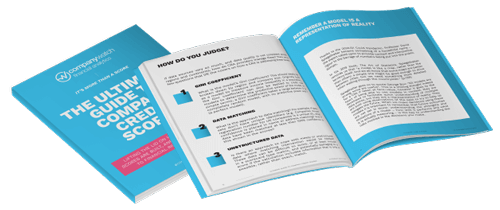What Is Financial Risk Management And Why Is It Important?

Extending credit to a business is never risk-free, but that doesn’t mean you shouldn’t protect yourself. We are living in a time of unprecedented economic turbulence, making it more important than ever to shield yourself against potential losses.
To do this, you need to thoroughly vet every business before you extend credit or engage in any business transaction. This means considering not just the trustworthiness of a company, but also its vulnerability to external shocks. This is a lot to ask, but our financial risk solutions can help.
In this blog, we’ll take a look at the most common types of financial risk, the most effective strategies for mitigating them, and how our tools can help you steer clear of danger.
Financial risk comes in many forms
Before we talk about financial risk management, we need to define financial risk. Before extending credit to a new customer, it’s advisable to carry out a financial risk assessment. This is a thorough investigation of a company’s finances designed to gauge the level of risk it carries. This risk can take many forms, but it usually falls into one of four categories:
- Market risk - This is the likelihood that a company will incur losses as a result of external market forces. This could be anything from a change in interest rates to a sudden spike in shipping costs. This type of risk is especially significant at the moment. The war in Ukraine, the cost of living crisis, and the ongoing effects of Brexit have all increased market volatility, leaving many companies at the mercy of events outside of their control.
- Credit risk - This is the risk of a company being unable to pay its creditors. This is another area of risk that is highly relevant in 2023. British companies took on £79 billion of extra debt during the pandemic and, as interest rates continue to rise, many are now struggling to keep up with repayments.
- Liquidity risk - A company may be profitable on paper but still lack the cash flow to meet its short-term obligations. It may not have the buyers or infrastructure to turn assets into cash efficiently, or it may be affected by seasonal fluctuations in revenue. This results in it becoming “cash poor”, causing it to default on payments even though it has the assets to cover them.
- Operational risk - A company’s risk level isn’t only affected by external factors. Operational risk refers to the likelihood of losses caused by the internal workings of a business. This could be anything from a technical failure caused by outdated technology to employee errors caused by insufficient training.
Crucially, this category also includes fraud, another risk that has increased significantly in recent years. Thanks to a combination of desperation and opportunism, fraudulent activity
quadrupled during the pandemic. This included almost £5 billion of misappropriated COVID support loans- money that the government is now eager to recoup. With a specialised task force now chasing these payments, many seemingly stable companies could be heading for expensive lawsuits.
Too much information
You’ll need to consider all of these risks before extending credit to a business. This means assessing its past and present financial situation, but also making an educated guess as to its future performance. As well as gathering data on the company, you’ll need to interrogate this data in a way that yields meaningful results. This is where things get tricky.
The UK is blessed with some of the most detailed public financial records in the world. Over 4 million businesses are registered with Companies House, but this abundance of data is a mixed blessing. Finding the necessary information can mean sifting through thousands of reports - a task that few businesses have time for. To make matters worse, Companies House saves these reports as non-searchable PDFs, leaving you no choice but to wade through them manually.
Faced with such a Herculean task, many businesses opt instead for a simple automated credit check. This may be enough to identify obvious vulnerabilities, but it’s unlikely to alert you to more subtle dangers.
An automated credit check will look at the current financial health of a company, but it won’t tell you much about how it would cope with unforeseen events. It’s also unlikely to take into account factors such as fraud or poor management, as these tend to be hidden from the public.
Extending credit based on an automated credit check is a big risk. You’re placing a bet with incomplete information, and this leaves you open to all sorts of nasty surprises. A deeper analysis is needed, but who has the time for that? Luckily, help is at hand.
➡️ Discover the power of the Company Watch platform
Take the guesswork out of risk management
We believe that businesses shouldn’t have to choose between the quick option and the safe option. Our tools are designed to provide the best of both worlds - an efficient financial risk assessment that doesn’t skimp on depth:
- 🔎SearCHeD lets you search the Companies House database for words and phrases indicative of risk. We’ve converted hundreds of thousands of financial records into searchable documents, taking the legwork out of company background checks. You can narrow the search to a single company, scan your current portfolio, or search the entire database for a particular term.
- 📉 While most credit reference agencies assign companies a simple numerical risk score, we use our own metric - the H-Score®. This doesn’t just indicate the level of risk within a company. It also measures how much that company resembles other companies that have failed in the past. This lets you assess company risk in a wider context and makes it easy to compare risk levels across multiple businesses.
- 🔭 Forecast View™ gives you access to the latest in financial modelling. You can simulate a range of economic shocks and see immediately how they would affect a company’s H-Score®. Anything from a spike in interest rates to the loss of a key supplier can be incorporated into the model, giving you a clear picture of how the company would cope under stress.
These are just a few of the ways that we can help you to spot financial risk in advance. From exposing hidden company directors to analysing financial reports, there’s no limit to how deep you can dig.
To find out more or to arrange a free trial of our platform, don’t hesitate to get in touch.

